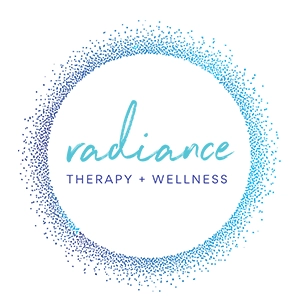Most clients come to work with me because they want relief from chronic pain.
Often times, they assume that the focal point needs to solely be on the area where symptoms are present. This is quite normal and natural, to desire direct contact with an area of discomfort. That attention and focus is a fantastic starting point in fact. However, what is usually most effective is zooming out and assessing the entire body, and using the painful or symptomatic region as an entry point.
In my work as an occupational therapist and myofascial release practitioner my wide focus is on treating the whole person (body, spirit, mind, emotion, environment, roles, and routines). The reason I address the entirety of a person is because if the various yet interconnected parts are not addressed, the results will likely not be what my clients were hoping for.
Particularly when healing chronic pain…
It is important to hold in mind this broad focus. To approach the body as one continuous unit or web. Where the pain is felt in the body is often not where the cause of that pain originates. One area of tension in the tissue web can actually show up as a symptom somewhere else in the body. This is because the entire body is interconnected by the visco-elastic medium called fascia. It is helpful to think of fascia like a spider web, if you were to gently tug on one point in that web, you would notice that across on the other side the tension (and shape of the web) would change.
Addressing symptoms in this way requires patience.
One of the reasons it takes time is because when we resolve one area of discomfort, another area will be revealed. This revealing process usually happens several times before we are able to trace it back to the original injury/adhesion, somewhere else in the system.
Another common assumption…
is that the pain is just that, physical pain. Because we are mind-body-energy systems, the symptom of pain may actually be a manifestation of trauma or repetitive stress on any one part of that system. In this kind of approach to healing chronic pain there has to be a willingness to hang out in the unknown, in a curious space. The curiosity helps to increase awareness of the whole system versus hyper-focusing on the symptom alone.
If this all makes sense, fantastic!
Yet, if you are needing an embodied approach to help you digest and better understand this concept, I invite you to try this practice…
- Have a tennis ball or a 2.5 inch TuneUp myofascial ball handy.
- Stand with your feet approximately hip distance apart (or sit in a chair).
- Slowly make your way into a forward fold.
- Notice the left side of your trunk and the back of the left leg.
- How much tension do you notice? How much openness?
- Notice the right side of your trunk and the back of the right leg.
- How much tension do you notice? How much openness?
- Is the right side more flexible than the left? Or vice versa?
- Notice how close each hand is to the floor, relative to the other hand.
- Then, come back to standing (or sitting upright) and place the tennis or myofascial ball under your right foot. With light to medium pressure move the foot forward and back so that the ball rolls vertically from the base of the big toe to the inner heal. Repeat this slowly and mindfully 15-20 times.
- Do the same vertical stroke on the outer foot from the base of the pinky toe to the outer heal, slowly and mindfully, 15-20 times.
- Next, place the myofascial ball off to the side and stand (or sit); come back into the forward fold.
- Notice the right and left sides of the trunk, the back of the legs, and the position of your hands.
- Has anything changed on the right side, compared to the left? Take some time to notice if anything has changed.
- Repeat on the left foot and then assess in a forward fold again.
- Once complete, sit or stand for a few deep breaths to notice how your entire back body feels, has anything changed? What do you notice?
I would love to hear from you!
Any thoughts you want to share, please do. If you did the exercise, I invite you to share your insights too.
Lastly, I leave you with a quote to ponder…
“Too often we experience pain and our natural reaction is to move our awareness as far away from the pain as possible. I’d like to propose a different relationship with pain, a more exploratory one where we understand it better, and what it’s trying to tell us.”
– Thomas Gilliford
*Header image credit: Jack van der Spoel

